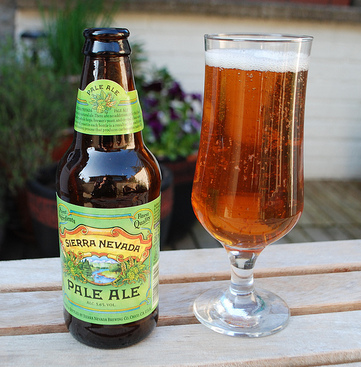Behind-the-Scenes at a Distillery in Galveston: Tours and Tastings
Behind-the-Scenes at a Distillery in Galveston: Tours and Tastings
Blog Article
Distilleries Demystified: A Complete Breakdown of the Production Refine
In the realm of spirits production, distilleries offer as the enigmatic centers where raw active ingredients are changed right into nuanced and complex potions. The procedure of purification is a precise craft that intertwines scientific research, tradition, and virtuosity to generate the spirits we have actually come to appreciate.
History of Distilling
These old societies used crude types of distillation to create perfumes, medicines, and also alcoholic beverages. They spearheaded the use of distillation for the production of spirits like brandy and bourbon, laying the groundwork for the distilling methods we see today.
The distilling procedure remained to progress through the centuries, with the refinement of methods and the introduction of new modern technologies. The Industrial Change noted a significant transition, as innovations such as the column still revolutionized mass production and performance in distilleries. This age saw the rise of legendary spirits brands that have actually come to be house names worldwide. Today, the art of distilling has actually changed into an innovative industry, blending practice with advancement to meet the needs of a discerning international market.
Basic Material Option

When selecting basic materials, distillers have to think about the sugar web content, starch conversion potential, and any type of impurities present, as these variables directly influence the fermentation and distillation procedures. For instance, in whiskey production, the option in between different types of grains like corn, rye, barley, or wheat will certainly cause distinctive flavor accounts. In addition, the top quality and quality of the raw products can affect the efficiency of fermentation and inevitably influence the purity and complexity of the final spirit.
Fermentation Process
Throughout the fermentation process in distilleries, sugars from the raw materials are exchanged alcohol by yeast through an all-natural chemical response. This essential stage usually occurs in big storage tanks understood as fermenters (Seawall Bar). Yeast, a microbe, takes in the sugars present in the raw materials such as molasses, grains, or fruits. As yeast feeds on these sugars, it creates alcohol and co2 as by-products. The fermentation process is thoroughly checked to ensure optimal conditions for yeast task, such as preserving the appropriate temperature and pH degrees.
Fermentation times can differ relying on the particular distillery and the sort of alcohol being created. For example, some fermentations may last a couple of days, while others can take weeks. The length of fermentation greatly Recommended Site affects the final taste profile of the alcohol. When fermentation is complete, the resulting fluid, referred to as the "clean" or "beer," is after that all set to proceed to the purification stage, where alcohol focus is better raised through the splitting up of components based upon their boiling factors.
Distillation Strategies
Following the conclusion of the fermentation procedure, distilleries use a selection of purification methods to additional concentrate alcohol web content and improve the taste account of the liquid. This technique is understood for generating abundant and robust spirits (Distillery in Galveston).
One more commonly used technique is column purification, which entails numerous distillation phases in high columns. This technique is preferred for its performance in generating high-proof alcohol and is generally utilized in creating vodka and other neutral spirits. In addition, fractional distillation is a more polished type of column distillation that enables precise splitting up of different components based on their boiling factors, resulting in exceptionally pure spirits. Inevitably, the selection of purification method considerably influences the features and high quality of the final spirit produced.
Maturation and Bottling
Upon getting to the preferred level of flavor growth and complexity, distilled spirits go through maturation before being bottled for intake. Distillery in Galveston. Maturation is a critical stage where the spirits are matured in casks or barrels constructed from numerous materials like oak, which conveys distinct flavors and attributes to the fluid. Throughout this duration, the spirits communicate with the timber, allowing them to mellow, create new flavors, and boost their general intricacy

The duration of growth differs depending on the kind of spirit being produced and the wanted final product. Spirits such as brandy, rum, and bourbon commonly require years of growth to reach their ideal preference profile. Throughout this procedure, ecological factors like temperature level fluctuations can additionally influence the maturation procedure, influencing the final flavor of the spirit.
When the spirits have matured to perfection, they are ready to be bottled. Bottling involves filtering the spirits to eliminate any staying contaminations, adjusting the alcohol web content if required, and ultimately, packaging the liquid in containers or containers suitable for distribution and intake. The bottling phase represents the culmination of the purification procedure, where the carefully crafted spirits exist to consumers for their satisfaction.
Conclusion
In final thought, the purification process involves picking basic materials, fermenting them, and utilizing numerous strategies to distill the liquid. Maturation and bottling are crucial action useful link in creating high-grade spirits. Recognizing the history and ins and outs of distilling clarify the intricacy and virtuosity associated with producing distilled drinks. By complying with these actions, distilleries can create a vast range of spirits with distinct flavors and qualities.
The process of purification is a meticulous craft that links virtuosity, science, and practice to generate the spirits we have come to value.The choice of raw materials is an important element of the distilling process, influencing the quality and taste profile of the final spirits generated. Furthermore, fractional distillation is an extra polished type of column distillation that permits for browse this site specific separation of different parts based on their boiling points, resulting in exceptionally pure spirits. Throughout this procedure, environmental factors like temperature level variations can additionally influence the maturation procedure, impacting the last taste of the spirit.
The bottling phase stands for the conclusion of the distillation procedure, where the carefully crafted spirits are offered to consumers for their satisfaction.
Report this page